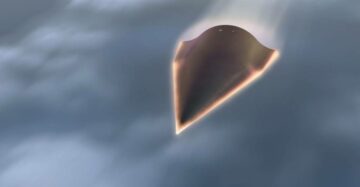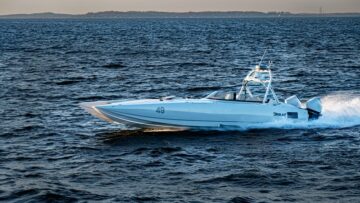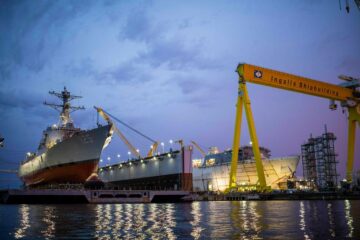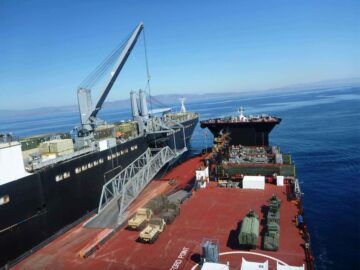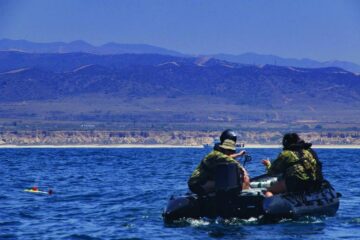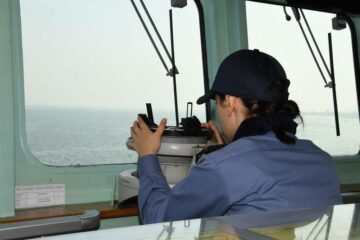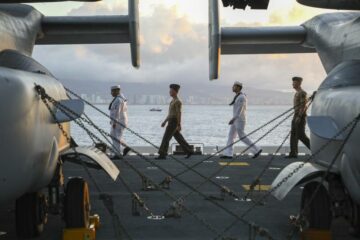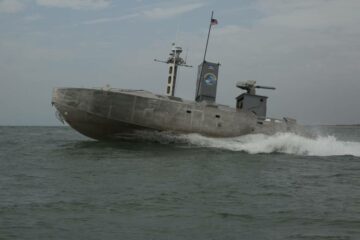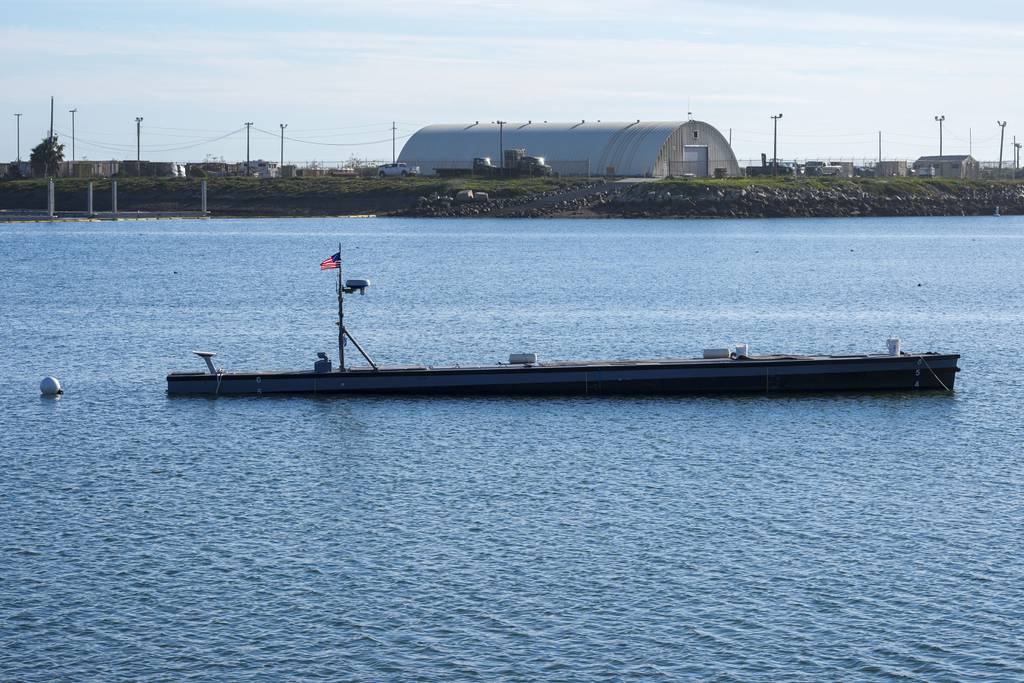
HUNTSVILLE, Ala. — The U.S. Army has reexamined its watercraft needs as it prepares for potential complex operations in challenging environments like the Indo-Pacific theater, according to the head of Army Futures Command.
Service officials have stressed the importance of building a new watercraft fleet to contend with operations in contested areas. Years ago, the Army shifted its priority away from the capability as it focused on operations in the Middle East. Now, with the service concentrating on deterring China as well as forging allies and partnerships in the region, the need for watercraft is high on the Army’s list of requirements.
The Contested Logistics Cross-Functional Team has “taken a fresh look at contested logistics in terms of watercraft,” Gen. James Rainey said March 26 at the Association of the U.S. Army’s Global Force Symposium. He declined to provide all details about the service’s potential future fleet, as he is awaiting final approval from the Army chief of staff.
“You will see a bunch of new innovative approaches. Think contracting, think leveraging. There are joint teammates that had some successful programs going on and a lot of autonomous and robotics efforts,” Rainey said.
The Army experimented with watercraft along with its joint partners in the Navy and the Marine Corps at Project Convergence in February and March. Project Convergence is a campaign of experimentation for the Army to figure out how it might fight across domains in complex environments, using what it is developing for a modernized force.
“The Army’s got its own enormous fleet of watercraft,” Col. Zachary Miller, who leads Joint Modernization Command, told Defense News in a recent interview. But he added that Project Convergence left Army leadership “recognizing that we can probably jump on each other’s requirements,” noting the Navy and the Marine Corps know watercraft best.
For example, the Marine Corps brought its autonomous low-profile vessel to Project Convergence. The prototype, for instance, carries two Naval Strike Missiles into about 4 feet of water. Marines would then pull the missiles onto the beach and to the nearest missile battery in need of resupply.
The service is also looking at other countries’ watercraft capabilities, Army Chief of Staff Gen. Randy George told Defense News in an interview this month. The Army has observed and worked with Australia, for instance, on what it is doing with watercraft in contested environments.
The service is pursuing a new watercraft that will cost more than double the original price tag to build, the service’s acquisition chief told Defense News last fall, but is still important to pursue.
The unit cost, after the most recent contract negotiations with the Maneuver Support Vessel (Light)’s builder Vigor Industrial, increased from $27.8 million to $63.1 million, a spokesperson for the acquisition chief confirmed.
The Army has not embarked on a new watercraft program since the mid-1990s, “so it’s a pivotal time,” Brig. Gen. Luke Peterson, program executive officer for combat support and combat service support, told Defense News in an interview last fall.
The service hit an important milestone on Oct. 10, 2022, when it put its first new prototype of the Maneuver Support Vessel (Light) into the water in Portland, Oregon. The vessel was supposed to participate in Project Convergence, but on its way to Camp Pendleton, California, it experienced a malfunction.
The Army’s Contested Logistics CFT was formed a year ago and has since zeroed in on developing watercraft, power-generation capabilities, and a more effective command-and-control network — capabilities meant to ease the movement of equipment, weapons and people. The team has prioritized capabilities that are needed to operate in the Indo-Pacific region.
The team, based in Huntsville, also achieved full operational capability in October 2023.
The service signed off on an abbreviated capabilities document for predictive logistics last month, Rainey noted. And the team has made progress on better batteries and reducing energy demand in the field, he added.
Jen Judson is an award-winning journalist covering land warfare for Defense News. She has also worked for Politico and Inside Defense. She holds a Master of Science degree in journalism from Boston University and a Bachelor of Arts degree from Kenyon College.
- SEO Powered Content & PR Distribution. Get Amplified Today.
- PlatoData.Network Vertical Generative Ai. Empower Yourself. Access Here.
- PlatoAiStream. Web3 Intelligence. Knowledge Amplified. Access Here.
- PlatoESG. Carbon, CleanTech, Energy, Environment, Solar, Waste Management. Access Here.
- PlatoHealth. Biotech and Clinical Trials Intelligence. Access Here.
- Source: https://www.defensenews.com/unmanned/2024/03/27/us-armys-fresh-look-at-watercraft-includes-unmanned-options/
- :has
- :is
- :not
- 1
- 10
- 2022
- 2023
- 26
- 4
- 70
- 8
- a
- About
- According
- achieved
- acquisition
- across
- added
- After
- ago
- All
- along
- also
- an
- and
- approaches
- approval
- ARE
- areas
- Army
- Arts
- AS
- Association
- At
- Australia
- autonomous
- awaiting
- award-winning
- away
- based
- batteries
- battery
- Beach
- BEST
- Better
- boston
- Boston University
- brought
- build
- builder
- Building
- Bunch
- but
- california
- Camp
- Campaign
- CAN
- capabilities
- capability
- challenging
- chief
- China
- College
- combat
- complex
- CONFIRMED
- contend
- contract
- contracting
- Convergence
- corps
- Cost
- covering
- Defense
- Degree
- Demand
- details
- developing
- document
- doing
- domains
- double
- each
- ease
- East
- Effective
- efforts
- embarked
- energy
- enormous
- environments
- equipment
- example
- executive
- Executive Officer
- experienced
- Fall
- February
- Feet
- field
- fight
- Figure
- final
- First
- FLEET
- focused
- For
- Force
- Forging
- formed
- fresh
- from
- full
- future
- Futures
- Gen
- George
- Global
- going
- got
- had
- Have
- he
- head
- High
- Hit
- holds
- How
- HTTPS
- images
- importance
- important
- in
- includes
- increased
- industrial
- innovative
- inside
- instance
- Interview
- into
- IT
- ITS
- james
- joint
- journalism
- journalist
- jpg
- jump
- Know
- Land
- Last
- Leadership
- Leads
- left
- leveraging
- light
- like
- List
- logistics
- Look
- looking
- Lot
- made
- March
- Marine
- master
- meant
- Middle
- Middle East
- might
- milestone
- Miller
- million
- missiles
- modernization
- Month
- more
- most
- movement
- Need
- needed
- negotiations
- network
- New
- news
- noted
- noting
- now
- observed
- Oct
- october
- of
- off
- Officer
- officials
- on
- onto
- operate
- operational
- Operations
- Options
- Oregon
- original
- Other
- out
- own
- participate
- partners
- partnerships
- People
- Peterson
- pivotal
- plato
- Plato Data Intelligence
- PlatoData
- Portland
- potential
- predictive
- Prepares
- price
- prioritized
- priority
- probably
- Program
- Programs
- Progress
- project
- prototype
- provide
- pursue
- pursuing
- put
- recent
- reducing
- region
- Requirements
- robotics
- s
- Said
- Science
- see
- service
- she
- shifted
- signed
- since
- some
- spokesperson
- Staff
- Still
- strike
- successful
- support
- supposed
- Symposium
- team
- terms
- than
- that
- The
- Theater
- then
- There.
- Think
- this
- time
- to
- told
- two
- u.s.
- unit
- university
- us
- using
- Vessel
- was
- Water
- Way..
- we
- Weapons
- WELL
- What
- when
- WHO
- will
- with
- worked
- would
- year
- years
- zephyrnet

